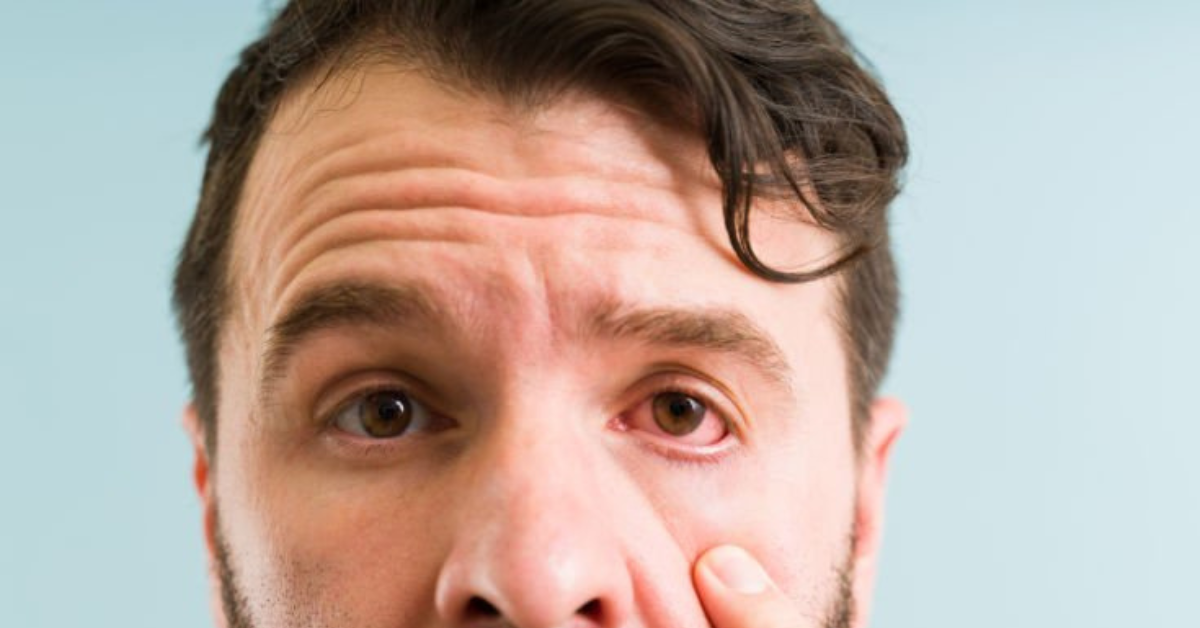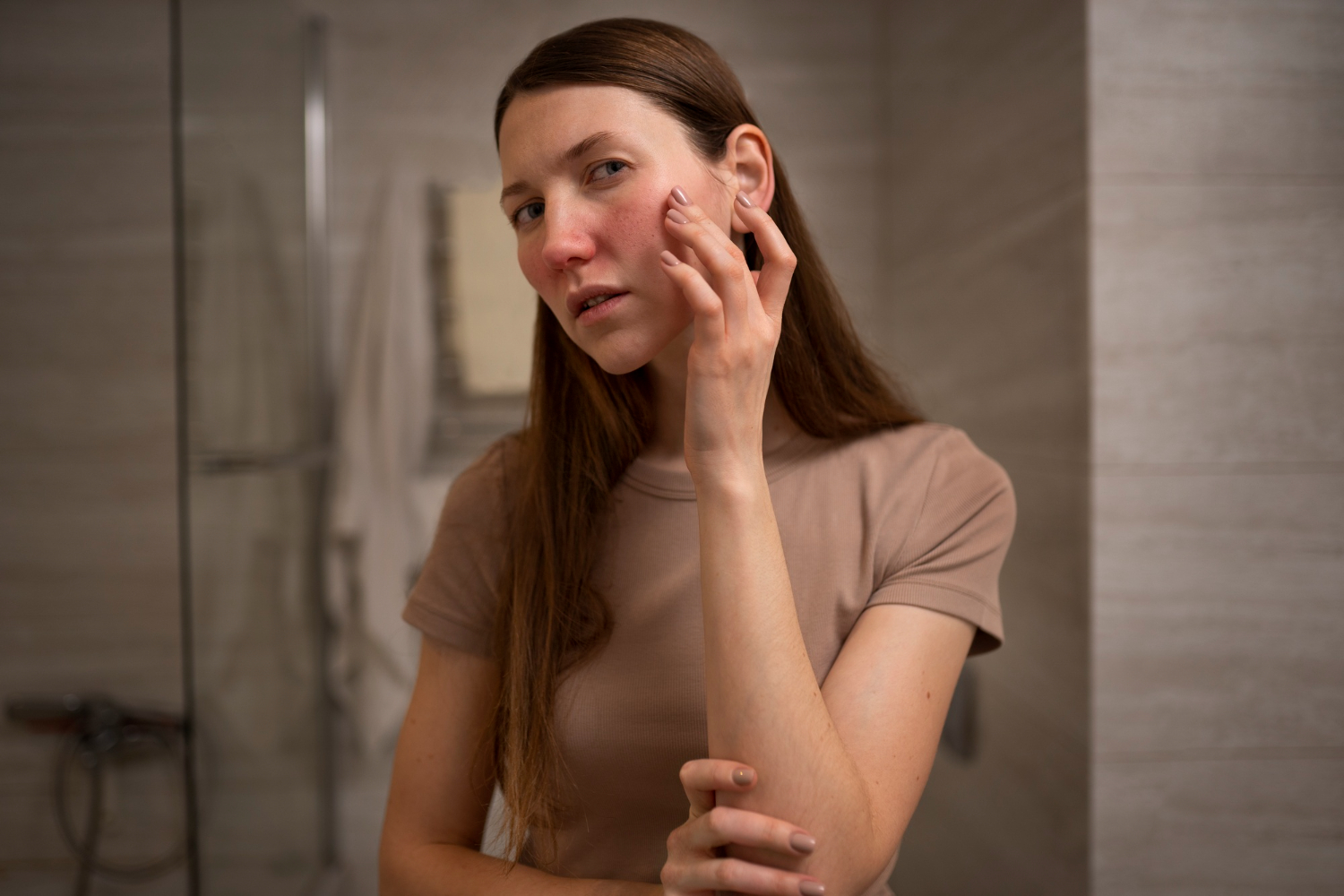Eye redness is one of the most common conditions people experience. While it may appear alarming, red eyes are not always a sign of something serious. Sometimes it happens due to minor irritation, while in other cases, it signals a deeper problem that requires medical care. Understanding the causes, symptoms, and prevention methods can help protect your eye health and ensure timely treatment.
What Is Red Eye?
Red eye refers to the appearance of redness in the sclera, the white part of the eye. It occurs when tiny blood vessels on the surface of the eye expand, swell, or break. The condition can affect one or both eyes, and the severity may range from mild irritation to severe infections.
Example: A person who spends long hours in front of a computer may develop eye redness due to digital strain.
Causes of Red Eye
The causes of red eye vary from simple environmental irritants to medical conditions. Below are the most common triggers:
1. Allergies
Exposure to allergens like dust, pollen, or pet dander can trigger histamine release. This causes redness, itching, and watery discharge. Seasonal allergies are among the most frequent reasons for eye redness.
2. Eye Infections
Viral and bacterial conjunctivitis, often known as pink eye, cause noticeable redness, irritation, and discharge. Such infections spread quickly in schools and offices without proper hygiene.
3. Dry Eyes
When eyes lack enough natural lubrication, they become red, dry, and uncomfortable. Screen time, dehydration, and certain medications make this condition more common.
4. Trauma or Injury
Even minor eye injuries, such as scratches or rubbing too hard, can lead to broken blood vessels and redness. In more serious injuries, redness may accompany swelling and pain.
5. Contact Lens Misuse
Wearing lenses for too long, not cleaning them properly, or sleeping with them can irritate the cornea. This not only causes redness but also increases the risk of infections.
6. Environmental Irritants
Smoke, chemical fumes, and chlorine in swimming pools often cause red eyes. Swimmers frequently experience temporary redness after pool exposure.
7. Underlying Health Conditions
Conditions such as glaucoma, uveitis, or high blood pressure sometimes show early warning signs in the form of eye redness. These require medical care.
For reliable insights on eye health, you can explore National Eye Institute or review CDC Eye Safety.
Symptoms of Red Eye
Red eye symptoms depend on the root cause. They can be mild and temporary or indicate serious health risks.
Mild Symptoms
- Pink or bloodshot sclera
- Mild itching or irritation
- Watery or teary eyes
- Slight burning sensation
- Clear or watery discharge
Example: People working in air-conditioned rooms often experience mild eye redness from dryness.
Moderate to Serious Symptoms
- Eye pain or pressure
- Blurry or distorted vision
- Thick yellow or green discharge
- Sensitivity to light (photophobia)
- Persistent redness lasting several days
- Swelling around the eyes
Example: Someone who wears contact lenses overnight may wake up with painful, red eyes and blurred vision.
Emergency Symptoms
- Sudden and complete vision loss
- Redness after chemical exposure
- Intense pain with nausea or vomiting
- Rapid swelling of eyelids or face
These require immediate medical attention.
When to Meet a Doctor?
Not every case of red eye needs medical treatment. For mild irritation caused by dryness, lack of sleep, or allergies, symptoms usually improve with rest and home remedies. However, you should consult a doctor if the redness persists for several days, worsens, or returns frequently.
Seek urgent medical care if redness is accompanied by severe pain, sudden vision changes, or unusual discharge. Red eyes caused by injury or chemical exposure should never be ignored. Similarly, if sensitivity to light or pressure inside the eye develops, it may point to glaucoma, uveitis, or other serious conditions. Timely medical advice helps prevent permanent damage and protects long-term vision.
Precautionary Steps for Red Eye
- Wash hands often to prevent infections.
- Avoid rubbing eyes with dirty hands.
- Clean and replace contact lenses properly.
- Wear protective glasses while swimming or working in dusty environments.
- Follow the 20-20-20 rule during screen time.
- Stay hydrated and use lubricating eye drops if needed.
Frequently Asked Questions (FAQ) About Red Eye
1. Can red eye go away on its own?
Yes, mild red eye caused by irritants, fatigue, or allergies often resolves in a few days. Persistent or painful redness should be checked by a doctor.
2. Is red eye contagious?
It depends on the cause. Viral and bacterial conjunctivitis are contagious, while red eye due to dryness, allergies, or trauma is not.
3. How long does red eye last?
Minor cases may improve within one to three days, but infections can last up to a week or longer with treatment.
4. Can home remedies help?
Cold compresses, artificial tears, and avoiding irritants can ease mild redness. Avoid overusing redness-relief drops as they may cause rebound irritation.
5. Does screen time cause red eye?
Yes, prolonged screen use leads to digital eye strain and dryness, which cause redness. Taking regular breaks reduces the risk.




